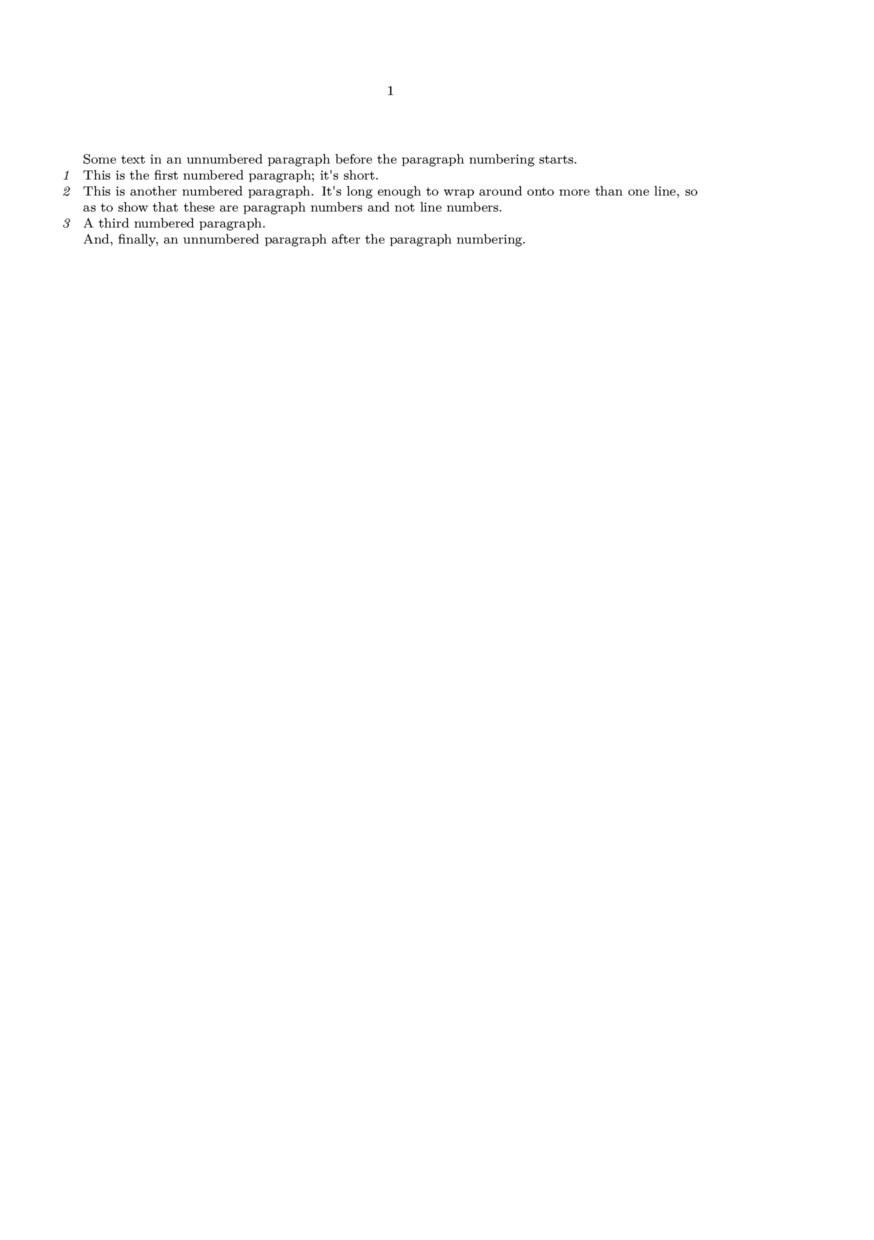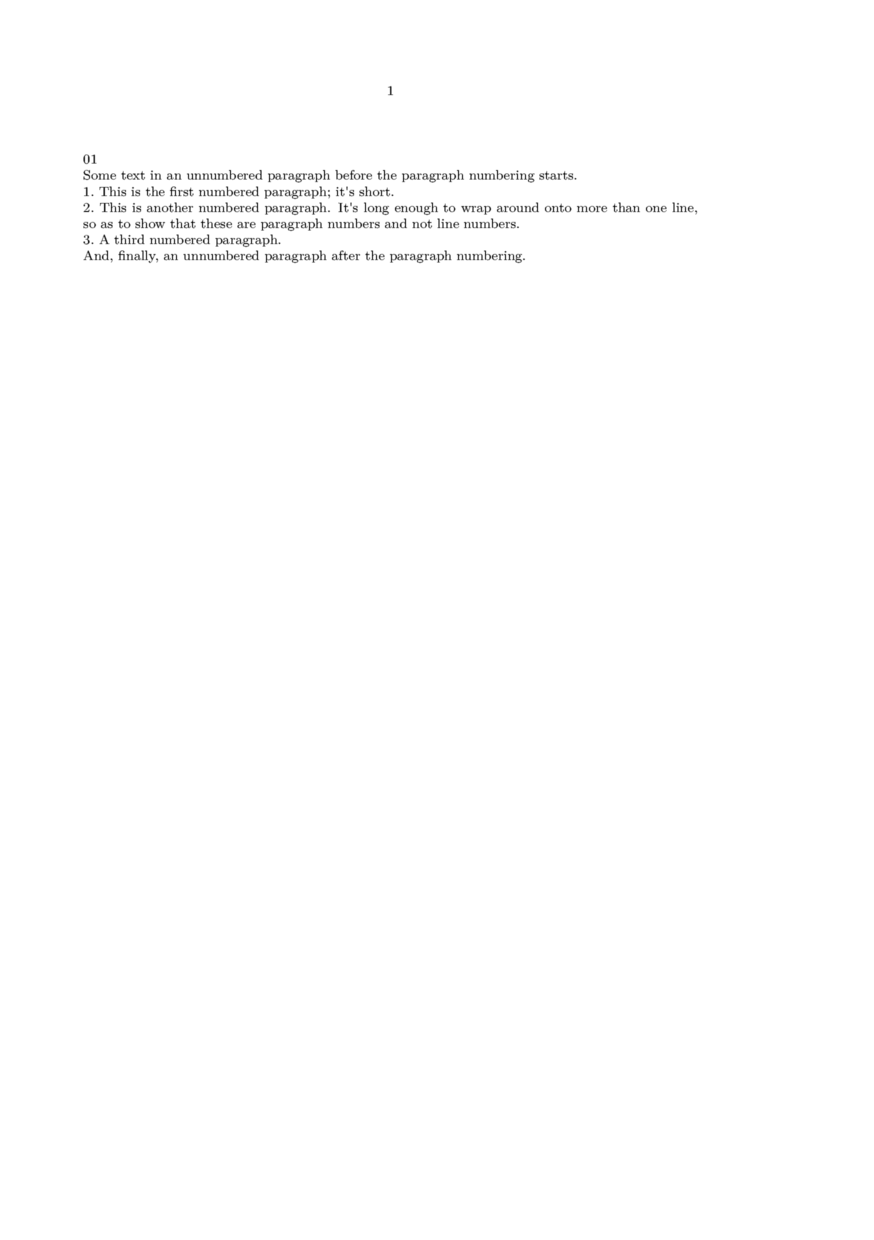Difference between revisions of "Paragraph Enumeration"
Jump to navigation
Jump to search
m (Fixed typo; mild example editing.) |
m (changed widths for better screen output) |
||
| Line 22: | Line 22: | ||
<context> | <context> | ||
| + | \setuplayout[scale=0.8,width=13cm] | ||
\starttext | \starttext | ||
Some text in an unnumbered paragraph before the paragraph numbering starts. | Some text in an unnumbered paragraph before the paragraph numbering starts. | ||
| Line 75: | Line 76: | ||
<context> | <context> | ||
| + | \setuplayout[scale=0.8,width=13cm] | ||
\newcounter\Paracount | \newcounter\Paracount | ||
\setcounter\Paracount1 | \setcounter\Paracount1 | ||
Revision as of 16:30, 24 May 2006
Standard Paragraph Numbering
ConTeXt has a built-in mechanism for paragraph numbering, which places numbers in the margin. This is accessed with \setupparagraphnumbering, as in this example, which also sets the number style to italic rather than the default roman.
\starttext Some text in an unnumbered paragraph before the paragraph numbering starts. \setupparagraphnumbering[state=start,style=italic,distance=0pt] This is the first numbered paragraph; it's short. This is another numbered paragraph. It's long enough to wrap around onto more than one line, so as to show that these are paragraph numbers and not line numbers. A third numbered paragraph. \setupparagraphnumbering[state=stop] And, finally, an unnumbered paragraph after the paragraph numbering. \stoptext

Paragraph Numbering in the Text
An alternate way of numbering paragraphs is to place the numbers in the running text, rather than in the margin. ConTeXt doesn't have a built-in way to do this, but it's not difficult to add a method using the \everypar macro. The following code was proposed by Taco on the mailing list.
\newcounter\Paracount \setcounter\Paracount1 \def\Paragraphnumber% {\increment\Paracount \Paracount.~} \def\startParagraphNumbers% {\par \begingroup \appendtoks \Paragraphnumber \to \everypar} \def\stopParagraphNumbers% {\par \endgroup} \starttext Some text in an unnumbered paragraph before the paragraph numbering starts. \startParagraphNumbers This is the first numbered paragraph; it's short. This is another numbered paragraph. It's long enough to wrap around onto more than one line, so as to show that these are paragraph numbers and not line numbers. A third numbered paragraph. \stopParagraphNumbers And, finally, an unnumbered paragraph after the paragraph numbering. \stoptext
This produces the following result/
